Garden pests - Snails
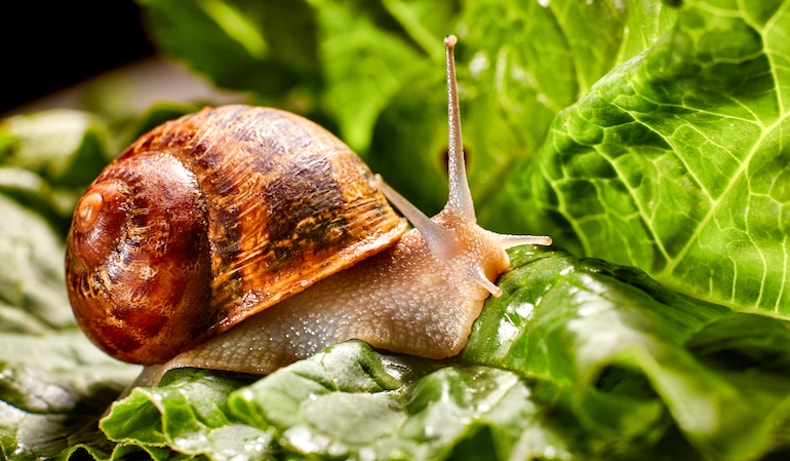
Learn more about these common garden pests
Image: Zick Svift/Shutterstock
Snails are a common pest in our gardens. They may be slow but they can quickly cause damage to plants - eating holes out of leaves, stems, flowers and veg.
What are snails?
Snails are gastropods - a type of mollusc with a single shell and soft body. Their tongues (or radulas) have thousands of tiny ‘teeth’ which rip their food into small pieces. Snails move along the ground using a single muscular ‘foot’, lubricated by mucus.
Snails like wet and damp conditions. They tend to come out into the open after dark, or after rainfall.
They’re dormant over winter and will hide in clusters under empty plant pots, large stones and other protected areas. Snails reproduce in autumn and spring and lay groups of round, yellow-white eggs under logs, pots and rocks.
The common garden snail (Cornu aspersum) is the one you’re likely to encounter wreaking havoc on your plants.
How to recognise the presence of snails
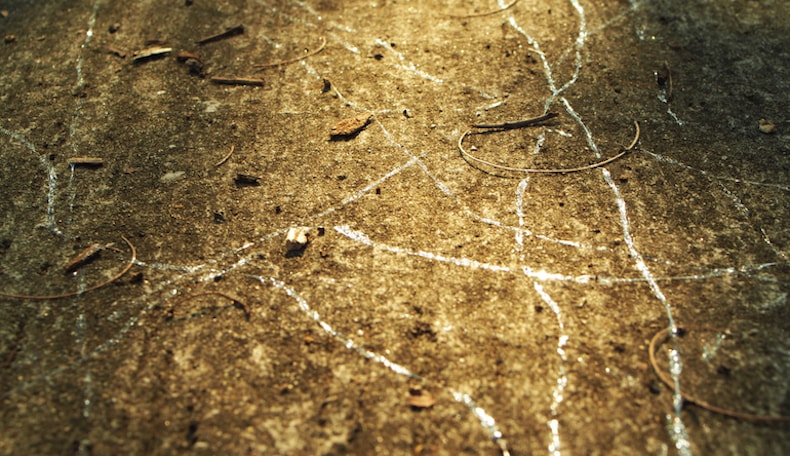
Keep an eye out for silvery slime trail
Image: Ekkaphop/Shutterstock
Snails leave a couple of calling cards:
- Holes - Their rasping tongues create tell-tale ragged, circular bite holes in whatever they’ve been eating. Young plants and new leaves can be completely eaten.
- Slime trails - The mucus they generate to aid movement leaves a silvery slime trail over the ground, leaves and stems.
But snails are also large enough to be spotted with the naked eye. If you go out into the garden with a hand torch after dark, you’ll be able to see whether or not snails are the cause of any damage to your plants.
Which plants do snails eat?
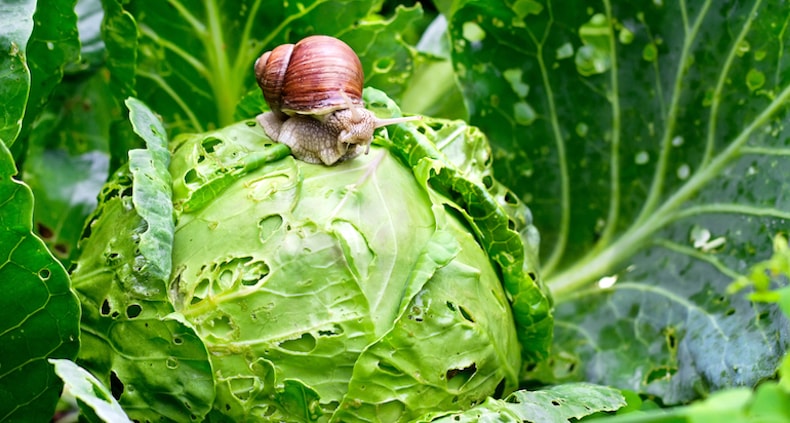
Snails can make quick work of your brassicas
Image: Kosobu/Shutterstock
Snails will eat most ornamental plants and vegetables - particularly when they’re young and in new growth in the spring. They are surprisingly good climbers and can even damage fruit trees.
They’ll also eat any decomposing organic matter including rotting leaves and compost and other dead snails and slugs.
How can I control snails?
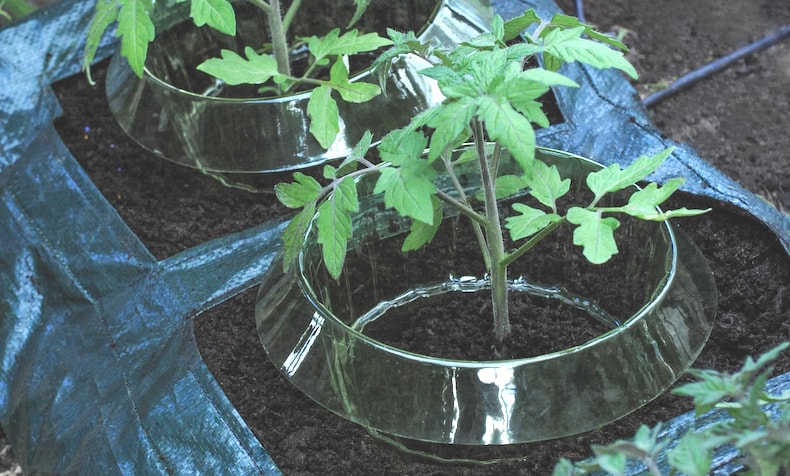
Protect young plants with snail collars
Image: Garden Grow Snail Collar from Thompson & Morgan
There’s no way to completely wipe out snails from your garden. But you can control their numbers and protect your most vulnerable plants from snail damage. Here’s how:
Trap them - beer traps are a natural form of pest control popular with many gardeners. Sink a glass or bowl containing beer into the ground near plants that are particularly vulnerable. Snails will be attracted to the smell of the beer and will fall in and drown. Be sure to check the traps every morning and remove any dead snails before they start to decompose and attract further snails into your garden.
Create a barrier around plants - The theory behind this method is that snails do not like to crawl across certain textures and strong smelling substances. Some gardeners swear by sprinkling broken eggshell, sharp grit or used coffee grounds in a protective circle around vulnerable plants.
Protect plants - putting a protective collar around young plants can help keep snails at bay. Snail collars can be sunk into the ground creating an impenetrable barrier to snails. The shape of the collar makes it impossible for snails to climb up and over too.
Deter them with copper - Snails don’t like coming in contact with copper as it gives them a mild static charge. Place copper rings on the earth around young plants as a deterrent and try copper barrier tape around plant pots.
Hunt snails after dark - Snails come out at night so if you head out into the garden with a hand torch after dark, you’ll be able to pick snails off your plants and put them into a container for disposal. What you do with them next is up to you. If you don’t want to kill them, be sure to remove them to a field far away from other gardens.
Encourage natural predators - Frogs, toads, hedgehogs and birds are among the snail’s natural predators. Encouraging more of these into the garden will help you to keep numbers down. You could even go the whole hog and invest in some hens or ducks to help you. They’ll be happy to help you control your snail problem and will reward you with fresh eggs in return.
Use slug pellets - Slug pellets have been around for years but they have changed a lot in composition. Gone are the old, harsh chemicals. Modern varieties are certified organic friendly and can be used around edible crops. You still have to be careful using them around children and animals, though.
Your snail questions
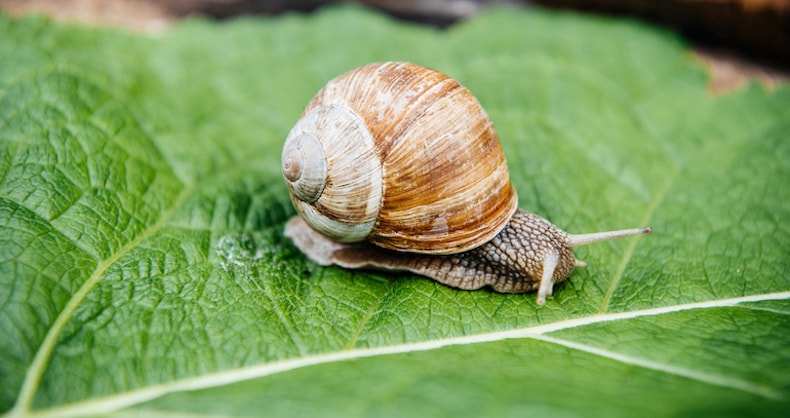
Let us answer your snail questions
Image: Hadrian/Shutterstock
Can I use nematodes to get rid of snails?
No, unfortunately you can’t. Nematode biological control works for slugs - which often go underground - but won’t affect snails, because they won’t come into contact with the soil-dwelling parasites.
Why have the stems of my clematis been stripped of their outer layers? Some of the stems are dead and there are holes in the leaves.
It sounds like your Clematis is struggling a bit! The damage to the stems and leaves is likely to be caused by snails or slugs between around April and June. The easiest way to deal with them is to apply slug pellets around the base of the plant and hand pick them off the leaves and stems at dusk when they are at their most active.
We would also suggest that you prune out any dead stems to allow new growth to develop.
What are the small transparent jelly things on the back of my water lily leaves?
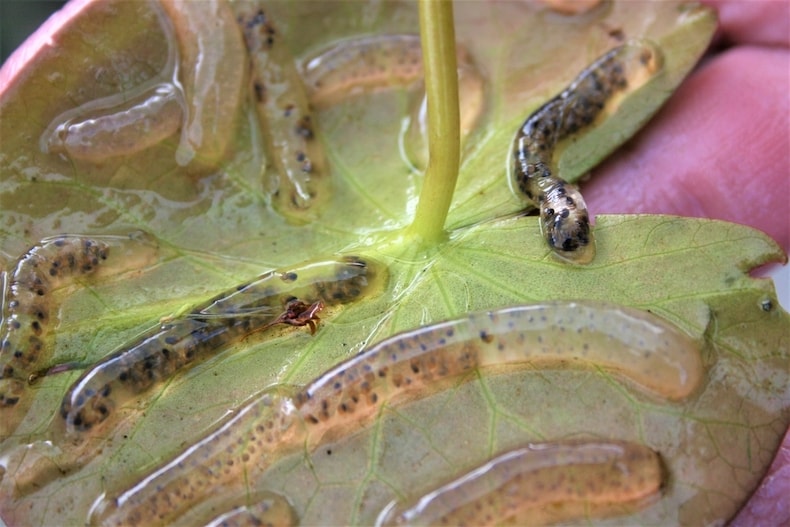
Keep an eye out for snail eggs
Image: Shutterstock
The jellies that you are noticing are probably snails' eggs, most likely greater pond snails (Lymnaea stagnalis). Snails are an important part of your ponds ecology but they can become a nuisance in ponds where they have become overpopulated. The eggs themselves will not do any harm but their parents may well take a nibble at your plants.
Given that chemical controls cannot be used in or around water, you’ll need to reduce the population by fishing snails out when you see them. One technique is to float lettuce leaves on the water, then remove and destroy them when you’ve collected a number of feeding snails on them.
If you can remove the eggs before they hatch, then that will be a few less snails to worry about. Of course, if they are not causing a problem in your pond then you don’t need to take any action.







